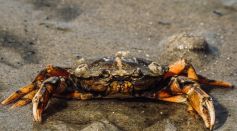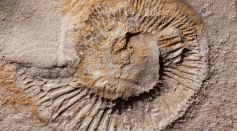ENVIRONMENT & CLIMATE
7,000-Year-Old Road Linked to Hvar Culture Settlement Unearthed at 16-Foot Depth in Mediterranean’s Adriatic Sea

Vaccination of Koalas During Antibiotic Therapy Shows Positive Response Towards Chlamydia Treatment

Meg Vs. T. Rex: Megalodon Shark Eats Tyrannosaurus Rex in New Movie; Is This Possible?

Dungeness Crabs Are Losing Their Sense of Smell Due to Climate Change, New Study Reveals; Findings Partially Explain Their Population Decline

Time Capsule of Poop? 2,200-Year-Old Bird Guano Pile Reveals History, Adaptability of Andean Condor Species

White-Eyed Demon Shark Species Found in Australia After the Discovery of Mysterious Egg Cases in Museum Collection

Self-Sustainability as a Way to Control the Planetary Crisis of Climate Change
Are Sharks Really Endangered? Anglers Reported More Encounters With Them

Carbon Capture Technology Using Enzyme Provides Sustainable Solution To Fight Climate Change
Woman Petrified After Seeing Snakes in Newly Purchased Home; Signs of Serpent Infestation

Clonal Raider Ants Mutation Affects Their Behavior, Will This Lead to Parasite Species Evolution?

Why Are Birds in the Americas Getting Smaller? Scientists Think Global Warming Could Be the Culprit

Glowing Golden Fossils From Early Jurassic Site Shed Light on How Exceptional Fossilization Takes Place, New Study Shows

Prehistoric Skeletons Discovered Inside 7,000-Year-Old Stone Tomb in Oman; Human-Made Structure Is One of the Oldest Ever Found in the Country
Most Popular

3I/ATLAS: The Truth Behind the Mysterious Interstellar Object Now Targeted by NASA and UN Teams

Hellfire Missile Video Reveals MQ-9 Reapers Being Used for Aerial Combat

Nvidia's Jetson Thor Could Make Humanoids Smarter Than Ever

Cyber Attack on Jaguar and Land Rover Cripples UK Operations: 1 October Earliest Restart as Deliveries Disrupted Worldwide




